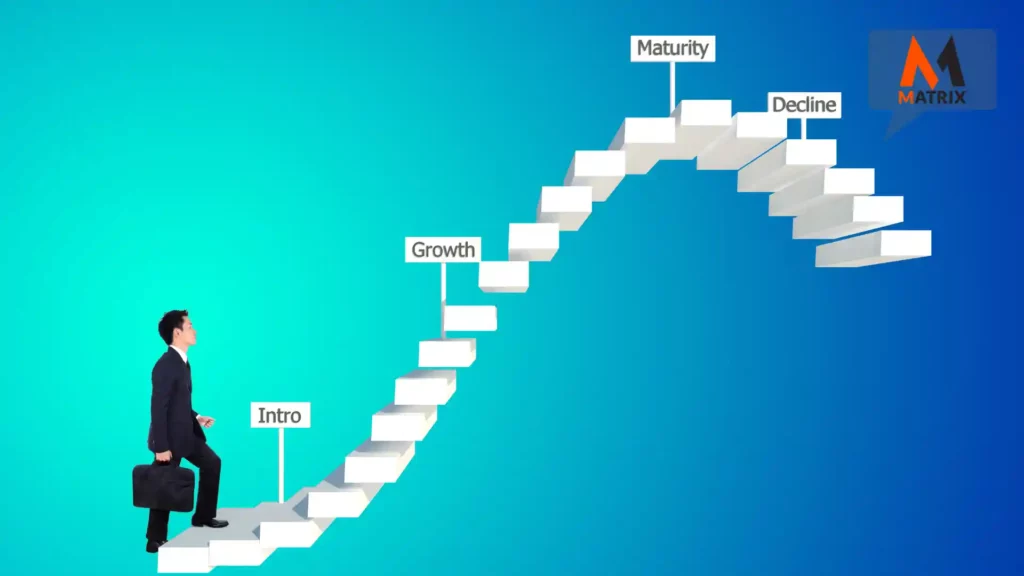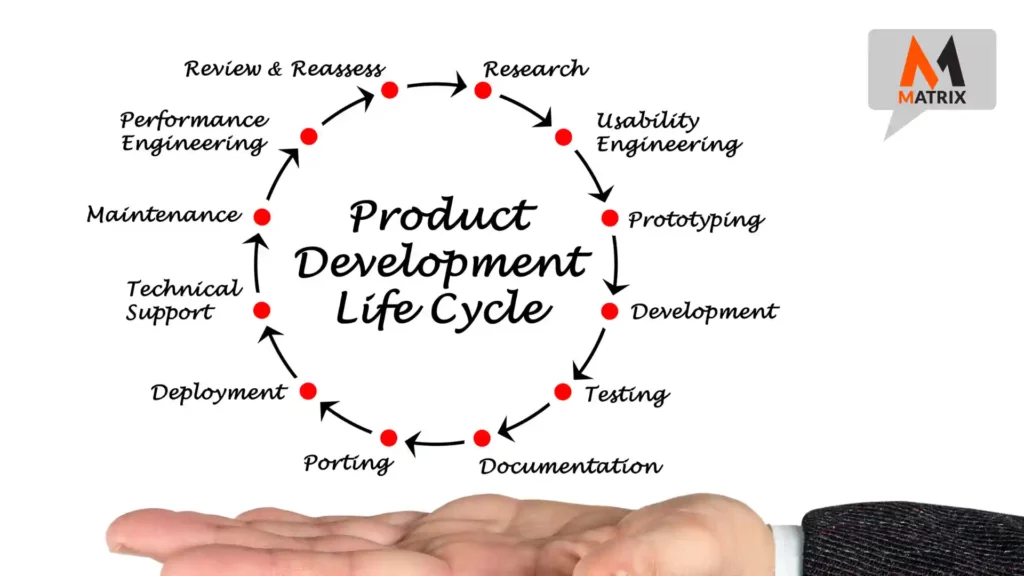Technology Adoption Curve: 5 Stages of Adoption
The technology adoption curve is typically in 5 stages of adoption. How do we keep up? How do we know when it’s time to adopt the latest and greatest piece of technology?
There are five stages of adoption of new technology-the innovators, early adopters, early majority, late majority, and laggards. Understanding these stages can help you understand how to market and sell a new technology to consumers. Where is an electric vehicle on the adoption curve vs. iPhone adoption curve?
Are you curious about the five stages of technology adoption?
Like most people, you want to stay ahead of the curve regarding technology. That’s why understanding the five stages of adoption is so important. Each stage has a unique driver set that determines how and why people adopt new technology.
It’s fascinating to see how different groups adopt different technologies at different rates. Once you understand the five stages, you’ll be able to see where your favorite piece of technology falls on the curve. For example, where is an electric vehicle on the curve vs. iPhone adoption curve?
Learn more about the five stages of technology adoption!
Problems for the head of product development in electronic product manufacturing

The head of product development in electronic product manufacturing faces a unique set of challenges regarding technology adoption. Stuck in one of the five stages of adoption, they cannot move their product forward and bring it to market.
Innovators are constantly pushing the envelope and looking for the next big thing. As a result, they can be difficult to work with. They often have unrealistic expectations and can be disruptive in the workplace. As a result, they can be difficult to work with.
Early adopters are eager to try new things but want assurance that the product is reliable and meets their needs. They are often vocal about what they like and don’t like about a new product, which can be helpful in feedback and time-consuming.
The early majority is more hesitant to adopt new technology. They want to see that others are using it before they invest in it themselves. They also want to make sure that there is a good support system in place so that if there are any problems, they can be fixed quickly.
The late majority and laggards are the last to adopt new technology. For them, change is not welcome, and they often stick with what they know, even if it’s no longer the latest and greatest.
How to market and sell new technology

When marketing and selling new technology, it’s important to understand the needs of each adoption stage.
Innovators are looking for something new and different. They want to be the first to try out a new piece of technology. As a result, they are often willing to pay more for it. Marketing to innovators should focus on the novelty of the product and how it is different from what is currently on the market.
Early adopters are looking for products that are reliable and meet their needs. They want reassurance that the product will work as advertised. Marketing to early adopters should focus on the features and benefits of the product. Having a good support system is also important to quickly resolve any problems.
The early majority is more price sensitive. They want to see that others are using the product before they invest in it themselves. Marketing to the early majority should focus on showcasing how popular the product is and how others use it. It’s also important to offer a competitive price.
The late majority and laggards are the most resistant to change. They often stick with what they know, even if it’s no longer the latest and greatest. Marketing to them should focus on the safety and security of the product. It’s also important to offer a discount or incentive to get them to try it out.
When was the last time you did an assessment for you products life cycle?
Why CMO should care about how fast the market adapts to new technology

When my team rolled out the check reader (have you ever written a check and had it scanned? Our technology was invented in Boulder, CO, by Soricon. Or a digital CCTV security system that we sold to the FBI, municipalities, ad transporting security. Before that, it was all digital. Here’s a clip from an employee who destroys company property.
So as a product guy, I can how many new product launches, but it’s over 100.
To stay ahead of the competition, CMOs must understand how quickly the market adapts to new technology.
If they can anticipate which types of technology will be popular in the coming year, they can begin marketing and selling those products well in advance. This gives them a significant edge over companies that wait until a new technology is already popular before releasing their product.
Furthermore, CMOs should know which stage of adoption their target market is in. Different strategies are necessary to reach consumers in different adoption stages. For example, when a product is first released, CMOs should target innovators and early adopters. Different strategies are necessary to reach consumers in different adoption stages.
These consumers are always looking for the latest and greatest technology and are willing to take risks on untested products. As a product becomes more popular, CMOs should target the early and late majority.
These consumers are more risk-averse and want to see a product’s success before they invest in it. Laggards should only be targeted once a product has been discontinued or is no longer profitable.
What is the Technology Adoption Curve

The technology adoption curve is a model that describes the process by which consumers adopt new technology.
The curve consists of five stages: innovators, early adopters, early majority, late majority, and laggards. Each stage has its own unique set of characteristics that drives how and why people adopt new technology.
Innovators are the first to try out a new piece of technology. They are looking for something new and different and are often willing to pay more. Early adopters are next on the curve. They are looking for products that are reliable and meet their needs. They want reassurance that the product will work as advertised.
The early majority is more price sensitive. They want to see that others are using the product before they invest in it themselves. The late majority and laggards are the most resistant to change. They often stick with what they know, even if it’s no longer the latest and greatest.
Understanding these five stages can help marketers and sellers understand how to market and sell a new technology to consumers. It can also help them anticipate which technology will be popular in the coming year.
The 5 Stages of the Technology Adoption Curve
The technology adoption curve is a model that describes the process by which consumers adopt new technology. The curve consists of five stages: innovators, early adopters, early majority, late majority, and laggards. Each stage has its own unique set of characteristics that drives how and why people adopt new technology.
Innovators are the first to try out a new piece of technology. They are looking for something new and different and are often willing to pay more.
Early adopters are next on the curve. They are looking for products that are reliable and meet their needs. They want reassurance that the product will work as advertised.
The early majority is more price sensitive. They want to see that others are using the product before they invest in it themselves. The late majority and laggards are the most resistant to change. They often stick with what they know, even if it’s no longer the latest and greatest.
Understanding these five stages can help marketers and sellers understand how to market and sell a new technology to consumers. It can also help them anticipate which technology will be popular in the coming year.
How to Market and Sell a New Technology Product
- Understand your target market
- Know your product
- Create a marketing strategy
- Produce quality content
- Use social media to reach your target market
- Use paid advertising to reach your target market
- Make it easy for customers to buy your product
- Offer customer support
- Follow up with customers after purchase
What are the major issues in the 5 Stages of the Technology Adoption Curve?
Innovation: The major issue in the innovation stage is getting people to believe in the product. It can be difficult to convince consumers to try something new, especially if it doesn’t yet have a track record.
- Early Adopters: The early adopters are always looking for the newest and latest products, so convincing them to try your product can be challenging. You must ensure that your product is worth the risk for them.
- Early Majority: The early majority is more risk-averse than the early adopters, so you must ensure that your product is stable and reliable. You also need to make sure that there is a good support system in place in case of any problems.
- Late Majority: The late majority is the most conservative group and is the last to adopt new technology. You must ensure that your product is affordable and easy to use.
- Laggards: The laggards are the least likely to adopt new technology, so you need to ensure that there is no risk involved in using your product. You also need to make sure that there are significant benefits to using your product.
5 Examples of Technologies products in Each Stage of Adoption
The best example of early adopters is the first iPhone by Apple, which was priced at $600. The price was quite high, as Apple lacked any experience in the industry.
- Innovators – Tesla Model S, iPhone
- Early adopters – Chevy Volt, Samsung Galaxy
- Early majority – Ford Explorer, Android
- Late majority – Ford Taurus, Windows Phone
- Laggards – Ford Fiesta, Blackberry
Knowing how to market and sell a new technology product can be difficult.
You need to understand your target market, know your product inside and out, create a marketing strategy, and produce quality content.
Use social media to reach your target market, use paid advertising to reach your target market, make it easy for customers to buy your product, offer customer support, and follow up with customers after purchase.
Conclusion
Technology adoption is a process that occurs when individuals or groups accept new technology into their lives. There are five stages of technology adoption-the innovators, early adopters, early majority, late majority, and laggards.
Each stage has its own unique set of characteristics that drives how and why people adopt new technology. Understanding these five stages can help you understand how to market and sell a new technology product to consumers.
How Matrix Marketing Group can help with Technology Adoption Curve
Matrix Marketing Group can help with all stages of the technology adoption curve. They can help innovation by creating creative ideas to get people to try your product. They can also help early adopters by providing complete information about your product.
Matrix Marketing Group can also help the early, late majority, and laggards by providing them with affordable prices and easy-to-use products. They also offer customer support so that customers are satisfied with their purchase.
Overall, Matrix Marketing Group can help with all stages of the technology adoption curve and ensure that your product is successful in the market.
General FAQs
What are the five stages of technology adoption?
The five stages of technology adoption are the innovators, early adopters, early majority, late majority, and laggards. Each stage has its own unique set of characteristics that drives how and why people adopt new technology. Understanding these five stages can help you understand how to market and sell a new technology product to consumers.
What is the innovator’s stage?
The innovator’s stage is the first stage of the technology adoption curve. The innovators are the people who are willing to try new technology and are not afraid of change. They are usually the first to adopt new technology.
What is the early adopter’s stage?
The early adopter stage is the second stage of the technology adoption curve. The early adopters are the people who are willing to try new technology and are not afraid of change. They are usually the first to adopt new technology.
What is the early majority stage?
The early majority stage is the third stage of the technology adoption curve. The early majority are the people who are willing to try new technology but are not as adventurous as the innovators or the early adopters. They usually adopt new technology once it has been tested and proven successful.
What drives people to adopt new technology?
People adopt new technology for a variety of reasons. Some people adopt new technology to keep up with the latest trends, while others adopt new technology to improve their lives or work. Some people are afraid of change and will not adopt new technology, while others are willing to try anything that might make their lives easier. Ultimately, people adopt new technology because it meets their needs or desires.


